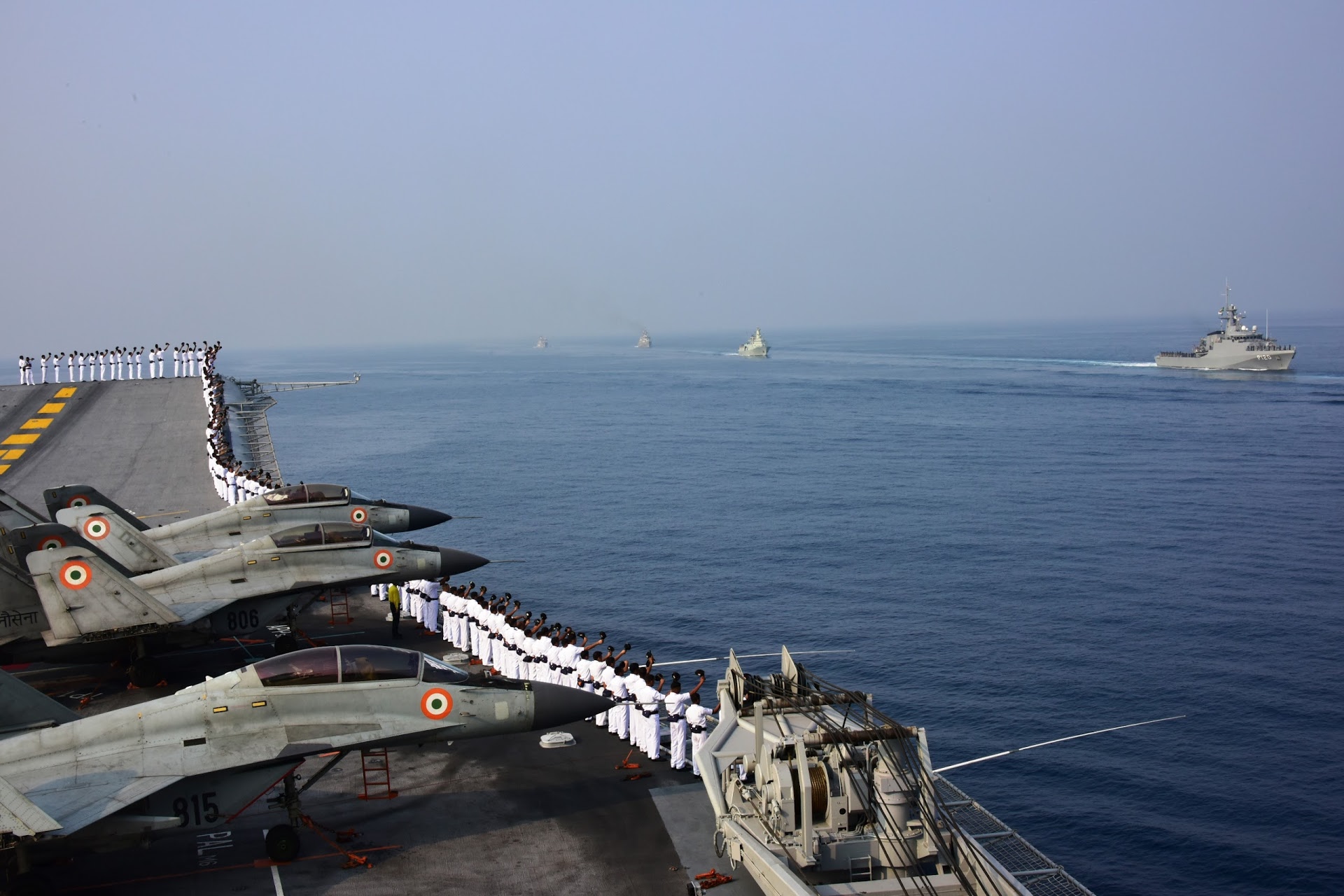
The many requirements for the ‘Vishal’ virtually excludes the possibility of construction by India alone.
International Fleet Review 2016Russia, France, Britain and the United States have been asked by the Indian Navy to participate in a tender and compete for a contract to develop a new aircraft carrier for it. According to some media reports, Russia and France have made it to the short list of bidders, while India is inclined towards the Russian version.
Announcing the beginning of design work on a new Indian aircraft carrier, the ‘Vishal’ in 2010, then Navy Chief Nirmal Kumar Verma said the Indian Navy wants a “large aircraft carrier” from which they will be able to launch fighters, radar surveillance aircraft, and tactical tanker aircraft. Officially, the new Indian aircraft carrier ‘Vishal’ is the second ship of the ‘Vikrant’ type. However, given requirements for the project promulgated by the Indian military means building a fundamentally new ship. To implement all these requirements, the ‘Vishal’ will need to have a nuclear power plant, and a displacement of 65,000 tons.
Such a ship is obviously not needed for the country’s traditional confrontation with the Pakistan Navy. The appearance in India’s naval fleet of a large nuclear-powered aircraft carrier, with a developed air group, presents a direct challenge to Beijing, a long-standing military and political partner of Islamabad.
Since the early 2000s, China has been putting in place the so-called “string of pearls strategy”, which implies the deployment of a chain of military bases in the Indian Ocean (including the potential use of Pakistan’s deep-water Gwadar Port leased to the Chinese in 2013), to place a strangle-hold on India.
The many requirements for the ‘Vishal’ virtually excludes the possibility of construction by India alone, and has created a bidding situation for foreign designers and component suppliers. Very few shipbuilding schools have the capability to compete to become the leading contractor for this new Indian aircraft carrier project.
It is important to eliminate the Americans from the possibility of participating in this project. All that Washington can really do under these circumstances is to try to push India to abandon the idea of using a nuclear power plant, and then attempt to sell New Delhi a converted boiler and turbine aircraft carrier of the ‘Kitty Hawk’ variety.
The option is possible, especially if India decides it needs to save money. Another issue is that, by tradition, the American military-industrial complex usually refuses to work in consortiums with competitors, especially when it comes to Soviet-Russian companies. The situation, in which India suddenly would place MiG-29K fighter jets on an American-built carrier, is almost impossible.
The French PA2 nuclear ship project, which was supposed to enter the French fleet after the Charles de Gaulle, almost meets all the parameters of the Vishal. After downsizing, its displacement would be about 62,000 tons, and it could carry more than 40 aircraft.
The third and final participant in this race for the “first nuclear” ship for India is the Russian Neva Design Bureau, whose work the Indians know well from their other aircraft carrier, ‘Vikramaditya’.
It can be assumed with a high degree of probability that, in accordance with the long-standing tradition of the Indian military, none of these bidders will be chosen as the “sole” contractor. Rather, a multilateral consortium will be built, in which each participant will play a well-defined role. What might this look like?
Playing a part in narrowing the range of options can be the Indian Navy’s requirement for harmonization of the new ship’s air wing with the existing aircraft already serving in the Indian Air Force and Navy. The Russian MiG-29K, among carrier-based fighter jets, is already in use on the aircraft carrier ‘Vikramaditya’ and is proposed for use on ‘Vikrant’ now being completed, and the French Rafale M. Both these meet the conditions required.
When it comes to the construction of the hull, taking into account the above-mentioned US restrictions, the real contenders for cooperation are the British, French, and Russians. A significant limitation for the British and French is their inability to supply a power plant with the capacity required for Indian conditions. Installation of the necessary capacity, on the basis of the Rhythm-200 reactors, can only be done by Russia.
As a “result” we arrive at the four most realistic versions of what the new Indian aircraft carrier will comprise:
1. A French hull with Russian power plant, Russian aviation-technical complex and a Russian air group.
2. A French hull with the Russian power plant, French aviation-technical systems and a mixed air group.
3. A Russian hull with the Russian power plant, French aviation-technical systems and a mixed air group.
4. A Russian hull with the Russian power plant, mixed Russian-French aviation-technical systems and a mixed air group.
First published in Russian by Lenta.ru.
All rights reserved by Rossiyskaya Gazeta.
Subscribe
to our newsletter!
Get the week's best stories straight to your inbox